
Psidium is a genus of trees and shrubs in the family Myrtaceae. It is native to warmer parts of the Western Hemisphere. Many of the species bear edible fruits, and for this reason several are cultivated commercially. The most popularly cultivated species is the common guava, Psidium guajava.
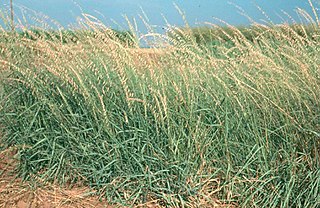
Bouteloua is a genus of plants in the grass family. Members of the genus are commonly known as grama grass.
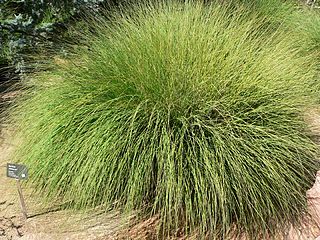
Muhlenbergia is a genus of plants in the grass family.

Quercus rugosa, commonly known as the netleaf oak, is a broad-leaved tree in the beech and oak family Fagaceae. It is native to southern North America.
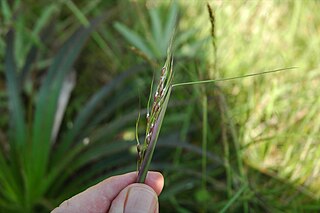
Piptochaetium, or speargrass, is a genus of plants in the grass family, native to North and South America. Piptochaetium is a bunchgrass genus in the tribe Stipeae.

Heterosperma is a genus of flowering plants in the sunflower family, native to North and South America.
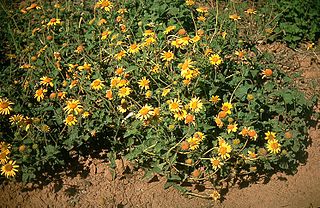
Simsia is a genus of flowering plants in the tribe Heliantheae within the family Asteraceae. It includes annuals, herbaceous perennials, and shrubs. They range from the western United States south through Central and South America to Argentina, with the center of diversity occurring in Mexico. The genus is named for British physician and botanist John Sims (1749–1831). Although some species are relatively rare, others have become common weeds that line the roadsides and fields of Mexico, often forming dense stands mixed with Tithonia and other Asteraceae. Some species are known by the common name bushsunflower.

Guzmania monostachia is an epiphytic species in the genus Guzmania. Also known as a West Indian tufted airplant, this species is native to South America, Central America, the West Indies and Florida. The species is also reportedly naturalized in Hawaii.

Bidens triplinervia is a Latin American species of flowering plants in the sunflower family. It is native to Mesoamerica and South America, from Chihuahua State in northern Mexico to Jujuy Province in northern Argentina.
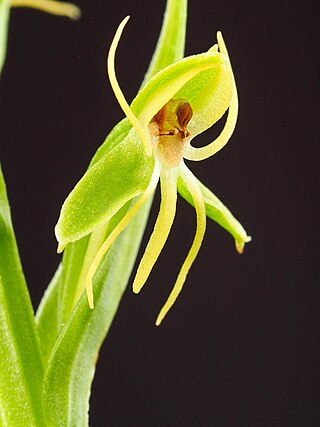
Habenaria repens, commonly called the water-spider bog orchid or the floating orchid, is an orchid species widespread across Latin America from Mexico and the West Indies south to Argentina, as well as in the Southeastern United States from Texas and Oklahoma east to Florida and the Carolinas plus an isolated population in Virginia.
Tropidia polystachya, the young palm orchid, is a species of orchid native to Mexico, Central America, Greater Antilles, Bahamas, Cayman Islands, Florida, Colombia, Venezuela, and Ecuador.

Ionopsis utricularioides, the delicate violet orchid, is an epiphytic orchid native to the warmer parts of the Americas. It is reported from Florida, Mexico, Central America, much of the West Indies including the Cayman Islands, South America as far south as Paraguay, and the Galápagos.
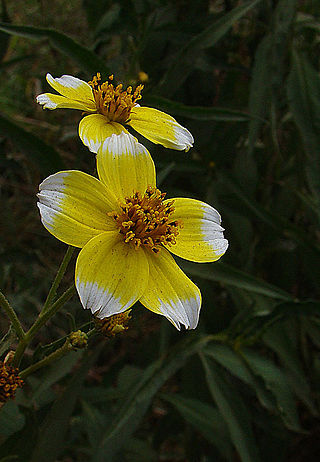
Bidens aurea , the Arizona beggarticks, is a North American species of flowering plant in the family Asteraceae. It is widespread across much of Mexico and found also in Arizona and Guatemala. The species is also naturalized in parts of Europe and South America.
Brickellia diffusa is a Latin American species of flowering plants in the family Asteraceae. It is widespread across much of South America, Central America, Mexico, Galápagos, and the West Indies. Its distribution stretches from Sonora and Tamaulipas in northern Mexico to Jujuy in northern Argentina.
Carminatia tenuiflora (plumeweed) is a species of annual plants in the family Asteraceae. It is native primarily to Mexico, but also the southwestern United States and Central America.

Chromolaena ivifolia called ivy-leaf false thoroughwort, or ivyleaf thoroughwort, is a species of flowering shrub in the family Asteraceae. It is native to North America and South America, from the south-eastern United States to Argentina.
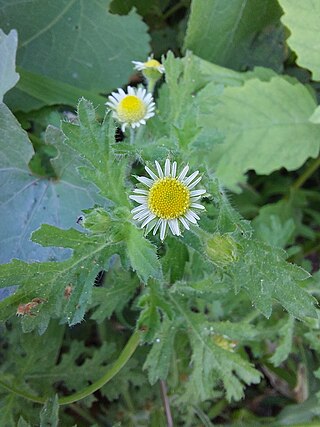
Egletes viscosa, the erect tropical daisy, is a New World species of flowering plant in the family Asteraceae. It is widespread across much of South America, Central America, Mexico, and the West Indies, just barely crossing the US border into the southernmost county in Texas.
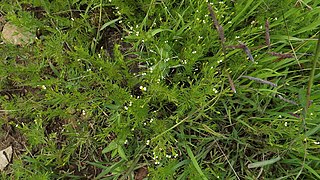
Tagetes filifolia is a New World species of marigolds in the family Asteraceae. It is widespread across much of Latin America from northern Mexico to Argentina. Common name is Irish lace despite the fact that the plant does not grow in Ireland.
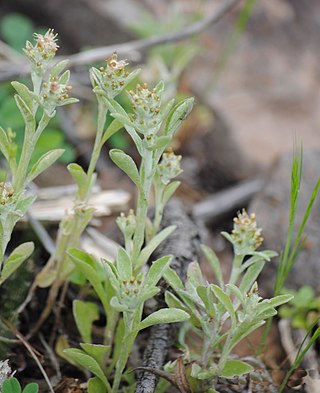
Gamochaeta pensylvanica, the Pennsylvania cudweed or Pennsylvania everlasting, is a widespread species of flowering plant in the family Asteraceae. It is native to South America and introduced into Eurasia, Africa, Australia, and North America. The pensylvanica epithet is a misnomer, as the plant is not native to Pennsylvania and only marginally naturalized there.

Xyris jupicai, common name Richard's yelloweyed grass, is a New World species of flowering plant in the yellow-eyed-grass family. It is widespread in North America, South America, Mesoamerica, and the West Indies.


















